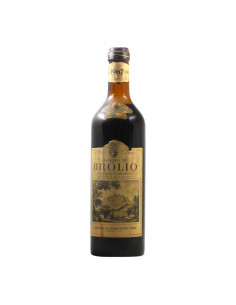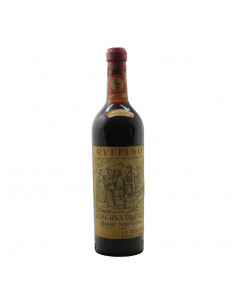Chianti
The Chianti and the Chianti Classico of Tuscany
The Chianti is one of the most representative wines of the Tuscan wine scene, a land of wine famous and recognized throughout the world for the great quality of its products and skills of its wine producers.
The Chianti is a Tuscan red wine, essentially differentiated into two variants regulated by regulations and by a Chianti consortium to protect the identity of the vine, which divide according to the area of production: the area of cultivation historically recognized as the motherland and defined as Chianti Classico, and a wider area, younger and considerable a territorial expansion of the historic production area that can only be disciplined to define its production as Chianti.
In conjunction with Brunello di Montalcino, Chianti is produced from Sangiovese grapes, it is an award-winning Tuscan wine and one of the most famous Tuscan wines in the world that is synergistically part of the winemaking tradition of this land, especially sought after abroad where it is recognized as one of the most important Italian red wines.
The difference between Chianti and Chianti Classico
The adjective classic in association with the Tuscan red wine Chianti is not random and, often, is emptied of its real meaning and its historical value that in fact, represents the Chianti "original", the "real" Tuscan Chianti of the wine tradition of the region.
All the wine produced outside the production area historically recognized and regulated by the appropriate specification is called Chianti, while all production within the designated area is a docg Chianti Classico.
They are therefore two distinct denomination, with different production specifications, different production areas and their own designated protection consortia.
The Chianti Classico DOCG is produced from Sangiovese grapes for the minimum 70% up to its expression in purity (Sangiovese 100%) grown and vinified in the center of the Tuscan territory including part of the provinces of Florence and Siena.
In addition, the remaining percentage of grapes used for winemaking must be strictly red grapes of the indigenous type such as Canaiolo Nero or Colorino, but also international including, for the most part, Cabernet Sauvignon and Merlot.
In order to comply with the specification, everything concerning cultivation, vinification, storage and bottling must take place in the areas pertaining to the designation, otherwise it will be impossible to fall under a DOCG Chianti Classico.
Finally, the Chianti DOCG regulations recognise as "Chianti" and "Chianti Superiore" the sub-zones "Chianti Colli Aretini", "Chianti Colli Fiorentini", "Chianti Colli Senesi", "Chianti Colline Pisane", "Chianti Montalbano", "Chianti Montespertoli" and "Chianti Rufina", provided that all the conditions and requirements of the regulations are always respected, first of all the territory of production, represented geographically (Chianti) by that part of Tuscany delimited to the north by the surroundings of Florence, to the east by the Chianti Hills, to the south by the city of Siena and to the west by the valleys of Pesa and Elsa;
The color is ruby red but can become, according to the origin, intense and deep. The aroma is reminiscent of floral notes of violets and irises combined with a typical character of red fruits and the taste is harmonious, dry, savory, with good tannins and is refined over time to soft velvety. The alcohol content must be at least 12,50 %. Chianti Classico d'Annata is a wine to be appreciated young, but the Riserva and the Gran Selezione are suitable for long aging.
Always ruby red, the Chianti wine, unlike the Chianti Classico, has a lower percentage of Sangiovese (70% minimum instead of 80%; 75% minimum for the sub-area "Colli Senesi") and the use of white grapes {max. It is produced in a vast area between the provinces of Arezzo, Florence, Pisa, Pistoia, Prato and Siena (in detail, types and sub-areas are as follows: Chianti Colli Aretini;Chianti Colli Fiorentini; Chianti Colli Senesi; Chianti Colli Senesi Riserva; Chianti Colline Pisane; Chianti Montalbano; Chianti Montespertoli; Chianti Rufina; Chianti Superiore).
With the exception of reserves, it is a wine to be appreciated in the first years after the harvest.
The alcohol content must be at least 10.50%; in some sub-areas the minimum is raised to 11-11.50%, to reach a minimum of 12.50% in the Chianti Colli Senesi reserve.















